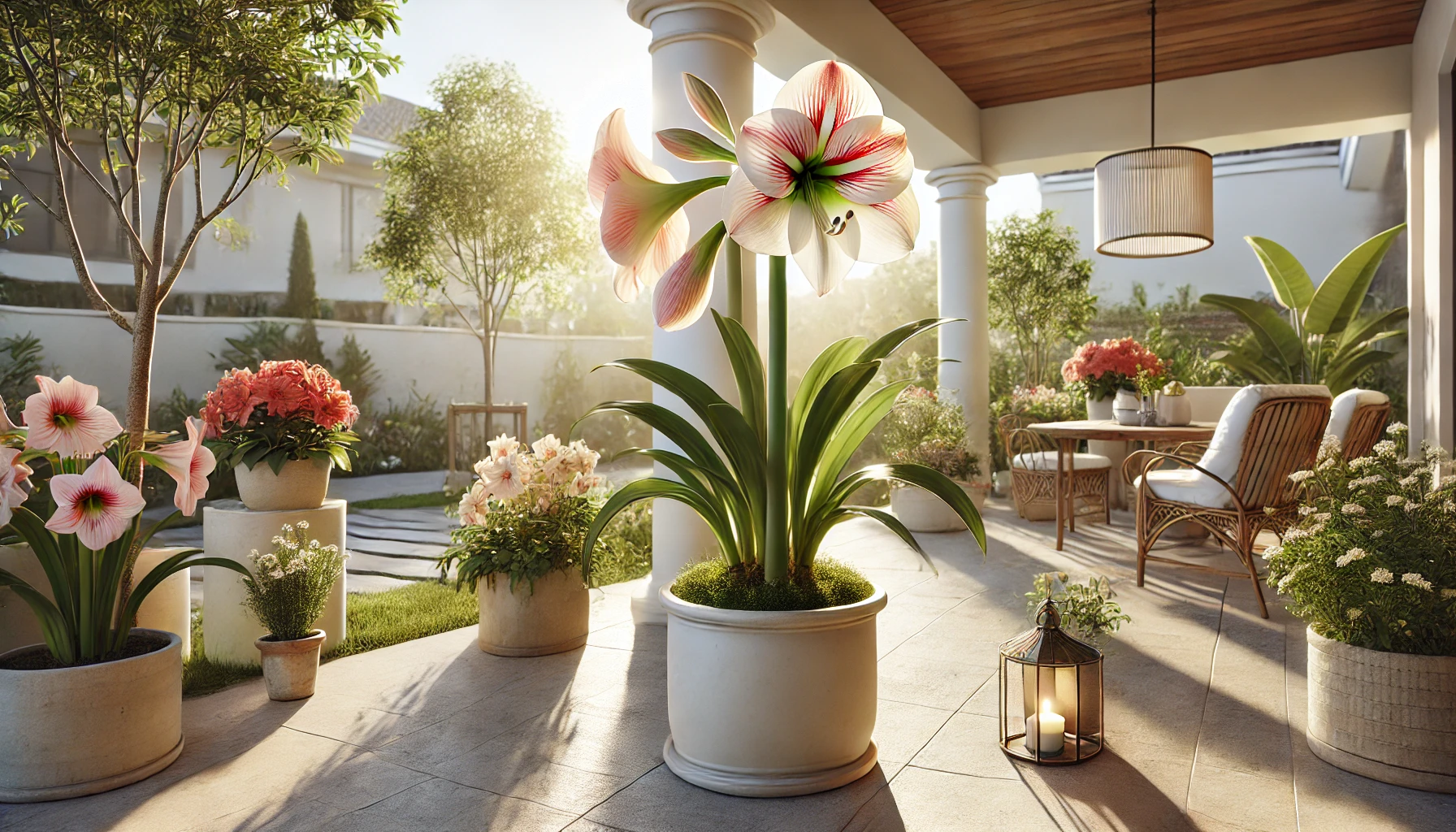
The Belladonna Lily, known formally as Amaryllis belladonna, is a stunning perennial bulb that captivates gardeners with its trumpet-shaped blooms and fragrant flowers. Often called the “Naked Lady” due to its habit of blooming on bare stems without foliage, the Belladonna Lily can reach a height of about 2 to 3 feet (60 to 90 cm). This elegant plant adds a touch of sophistication to any garden with its large, showy flowers that bloom late in the summer.
History and Ideal Growing Conditions
A Plant with Historical Significance
The Belladonna Lily is native to the Cape Province of South Africa, where it thrives in its natural habitat. It was introduced to Europe in the 1700s and has since become a beloved ornamental plant worldwide. Its ability to bloom during late summer, when many other plants have faded, makes it a valuable addition to gardens.
Perfect Conditions for Growth
To grow Belladonna Lilies successfully, plant them in well-draining soil in a sunny location. These lilies thrive in full sun but can tolerate partial shade. They prefer a warm, Mediterranean-like climate with temperatures ranging from 65°F to 75°F (18°C to 24°C) during the growing season. The Belladonna Lily is hardy in USDA zones 7-10 and requires a dry period during its dormancy to bloom optimally.
Belladonna Lily and Pets: What You Need to Know
Toxicity Concerns
The Belladonna Lily is toxic to pets, including cats and dogs. The plant contains alkaloids like lycorine, which can cause severe symptoms such as vomiting, diarrhea, and abdominal pain if ingested by animals. The bulbs are particularly dangerous, so it’s crucial to keep this plant out of reach of curious pets.
Safe Alternatives
If you’re looking for pet-safe alternatives, consider plants like the Areca Palm (Dypsis lutescens) or the Calathea (Calathea spp.). These plants offer beauty and are non-toxic to pets, making them a safer choice for homes with animals.
Best Practices for Caring for Belladonna Lily
Watering and Humidity
Belladonna Lilies prefer dry conditions during their dormancy period. Water them sparingly during this time, ensuring the soil remains on the dry side. However, during the growing season, water them regularly to keep the soil moist but not waterlogged. These lilies do not require high humidity and can tolerate dry air conditions well.
Soil, Light, and Temperature
Plant Belladonna Lilies in well-draining soil, such as sandy or loamy soil, to prevent water from accumulating around the bulbs. Full sun is ideal for these lilies, although they can tolerate some light shade. The ideal temperature for their growth ranges from 65°F to 75°F (18°C to 24°C). In colder climates, mulch the soil to protect the bulbs during winter, or grow them in containers that can be brought indoors.
Fertilizing
Fertilize Belladonna Lilies in the early spring when new growth begins. Use a balanced, slow-release fertilizer to provide nutrients throughout the growing season. Avoid over-fertilizing, as this can lead to lush foliage at the expense of flowers.
Common Problems and Remedies
Belladonna Lilies are generally hardy plants, but they can be susceptible to issues like root rot, particularly if planted in poorly drained soil. Ensure the soil is well-draining to prevent this. Pests such as aphids can also be a problem, so monitor your plants regularly and treat any infestations with insecticidal soap or neem oil.
Pruning Your Belladonna Lily
Pruning helps maintain the health and appearance of your Belladonna Lily. The best time to prune is in late winter or early spring before the new growth begins.
Tools Needed
Use a pair of sharp, clean pruning shears to make precise cuts. Sanitize your tools before and after use to prevent the spread of disease.
Identify Areas to Trim
Prune away any dead, damaged, or diseased leaves. If your Belladonna Lily has leggy growth, trim back the longer stems to encourage bushier growth.
Deadheading
Remove spent flowers regularly to keep the plant looking tidy and to encourage more blooms.
Prune Leggy Growth
If your Belladonna Lily has become too tall and leggy, prune back the stems by about one-third to promote a more compact shape.
Remove Damaged or Diseased Leaves
Cut away any leaves that show signs of disease or damage to prevent the spread of infections.
Shape the Plant
Shape your Belladonna Lily by pruning to maintain its desired size and form. This can help the plant fit better into your garden design.
Post-Pruning Care
After pruning, water your Belladonna Lily thoroughly and apply a light layer of mulch to help retain moisture and protect the roots.
Propagation and Benefits
Belladonna Lilies can be propagated through division or by planting seeds, although division is the most common method. To divide the bulbs, dig up the plant in the fall and separate the offsets. Replant them in well-draining soil in a sunny location. Propagation not only creates new plants but also helps rejuvenate the parent plant, leading to more vigorous growth and flowering.
Final Thoughts
The Belladonna Lily is a stunning, low-maintenance plant that adds elegance and color to any garden. With its striking flowers and fragrant blooms, it’s easy to see why this plant is a favorite among gardeners. By following the care tips outlined in this guide, you can enjoy the beauty of the Belladonna Lily year after year, whether you grow it in your garden or in containers.



